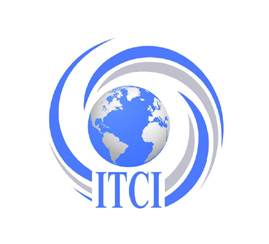SCRUM MASTER
SCRUM MASTER Certification
1) Scrum can be used in areas / projects other than just technology (historically the focus has been in the technology arena)
2) Scrum can be implemented in very large scale projects and initiatives – and they provide some formalized guidance and frameworks on how to accomplish this
3) SCRUMstudy provides a free online course with every exam voucher that includes high quality videos, an illustrative case study, phone apps and a free online copy of A Guide to the Scrum Body of Knowledge (SBOK™ Guide) with each certification voucher which complements the students' learning in a class.
In addition to all of this, the process for qualification as a REP for ScrumStudy is more objective, and based on an instructor’s knowledge of Scrum, and their experience than the others. The process for other organization is very much based on the ‘good ole boy’ system. If you are part of their network, you get approved… if not, you don’t and SCRUMstudy doesn’t really think that’s the best way to determine who is qualified to prepare folks to become Scrum certified.
Scrum Vs Traditional PM
Traditional project management emphasizes on conducting detailed upfront planning for the project with emphasis on fixing the scope, cost and schedule - and managing those parameters. Whereas, Scrum encourages data-based, iterative decision making in which the primary focus is on delivering products that satisfy customer requirements.
To deliver the greatest amount of value in the shortest amount of time, Scrum promotes prioritization and Time-boxing over fixing the scope, cost and schedule of a project. An important feature of Scrum is self-organization, which allows the individuals who are actually doing the work to estimate and take ownership of tasks.
Following table summarizes many of the differences between Scrum and traditional project management:
Parameters
Scrum
Traditional Project Management
Emphasis is on People Processes
Documentation Minimal - only as required Comprehensive
Process style Iterative Linear
Upfront planning Low High
Prioritization of Requirements Based on business value and regularly updated Fixed in the Project Plan
Quality assurance Customer centric Process centric
Organization Self-organized Managed
Management style Decentralized Centralized
Change Updates to Productized Product Backlog Formal Change Management System
Leadership Collaborative, Servant Leadership Command and control
Performance measurement Business value Plan conformity
Return on Investment Early/throughout project life End of project life
Customer involvement High throughout the project Varies depending on the project lifecycle
Why SCRUM?
Scrum is one of the most popular agile methodologies. It is an adaptive, iterative, fast, flexible, and effective methodology designed to deliver significant value quickly and throughout a project. Scrum ensures transparency in communication and creates an environment of collective accountability and continuous progress. The Scrum framework, as defined in the SBOK™ Guide, is structured in such a way that it supports product and service development in all types of industries and in any type of project, irrespective of its complexity.
A key strength of Scrum lies in its use of cross-functional, self-organized, and empowered teams who divide their work into short, concentrated work cycles called Sprints.
Traditional project management emphasizes on conducting detailed upfront planning for the project with emphasis on fixing the scope, cost and schedule - and managing those parameters. Whereas, Scrum encourages data-based, iterative decision making in which the primary focus is on delivering products that satisfy customer requirements.
To deliver the greatest amount of value in the shortest amount of time, Scrum promotes prioritization and Time-boxing over fixing the scope, cost and schedule of a project. An important feature of Scrum is self-organization, which allows the individuals who are actually doing the work to estimate and take ownership of tasks.
-
CLICK ON THE SECURE LINK BELOW TO REGISTER THROUGH EVENTBRITE AND SAVE $200 https://www.eventbrite.com/e/samctm-scrum-agile-certification-virtual-2-day-instructor-led-tickets-230630029627 SAMC™ SCRUM AGILE CERTIFICATION - VIRTUAL 2-Day Instructor Led, Feb 1st & 3rd, Tues &am..$779.00
-
SIX SIGMA - White, Yellow and Green Belt Certification Courses COMING SOON! ..$0.00
-
CLICK ON THE SECURE LINK BELOW TO REGISTER THROUGH EVENTBRITE AND SAVE $200 https://www.eventbrite.com/e/smctm-scrum-master-certified-virtual-2-day-instructor-led-tickets-230654312257 SMC™ SCRUM MASTER CERTIFIED - Bellevue 2-Day Instructor Led, Feb 8th & 10th, Tues & Thu..$779.00



